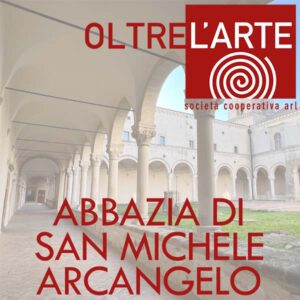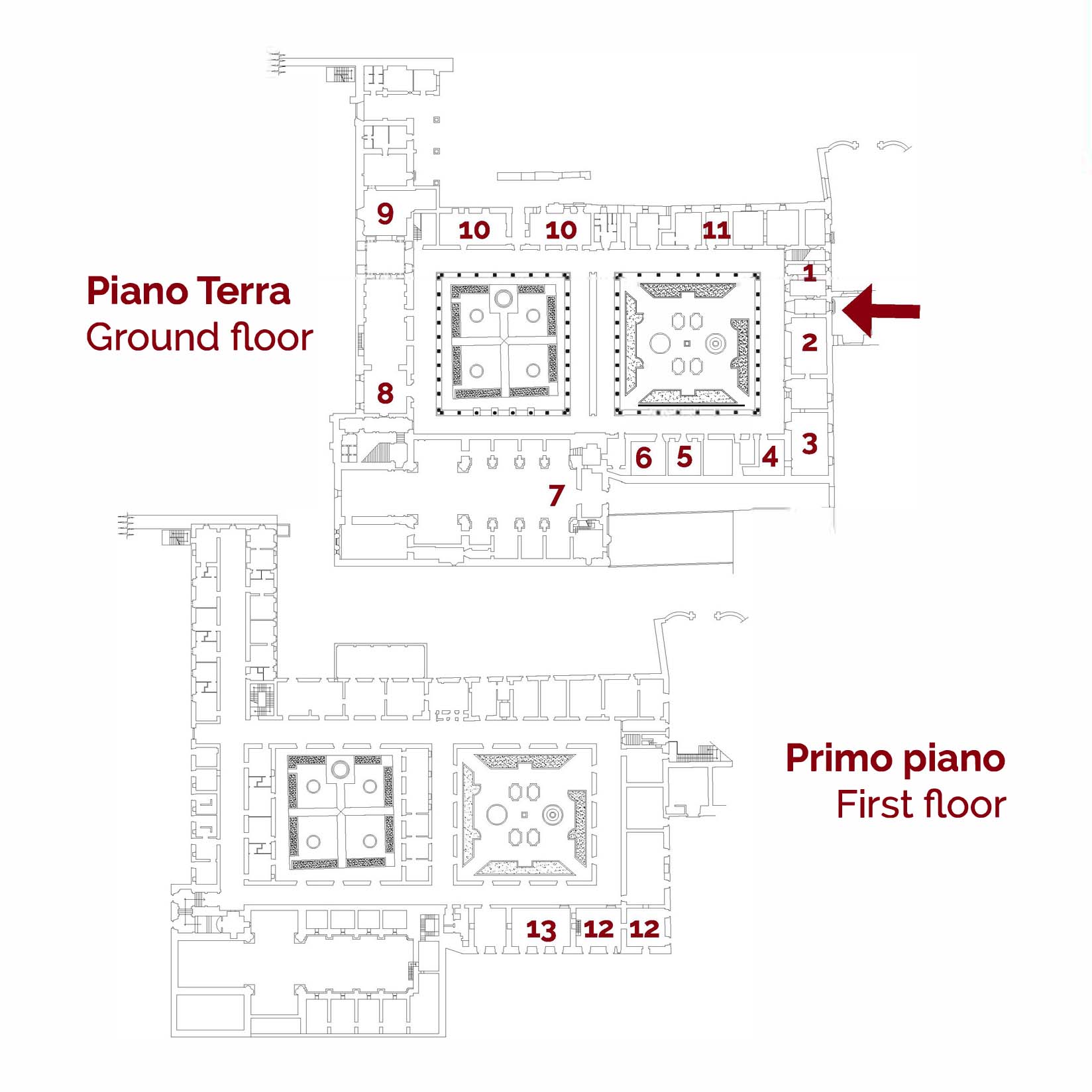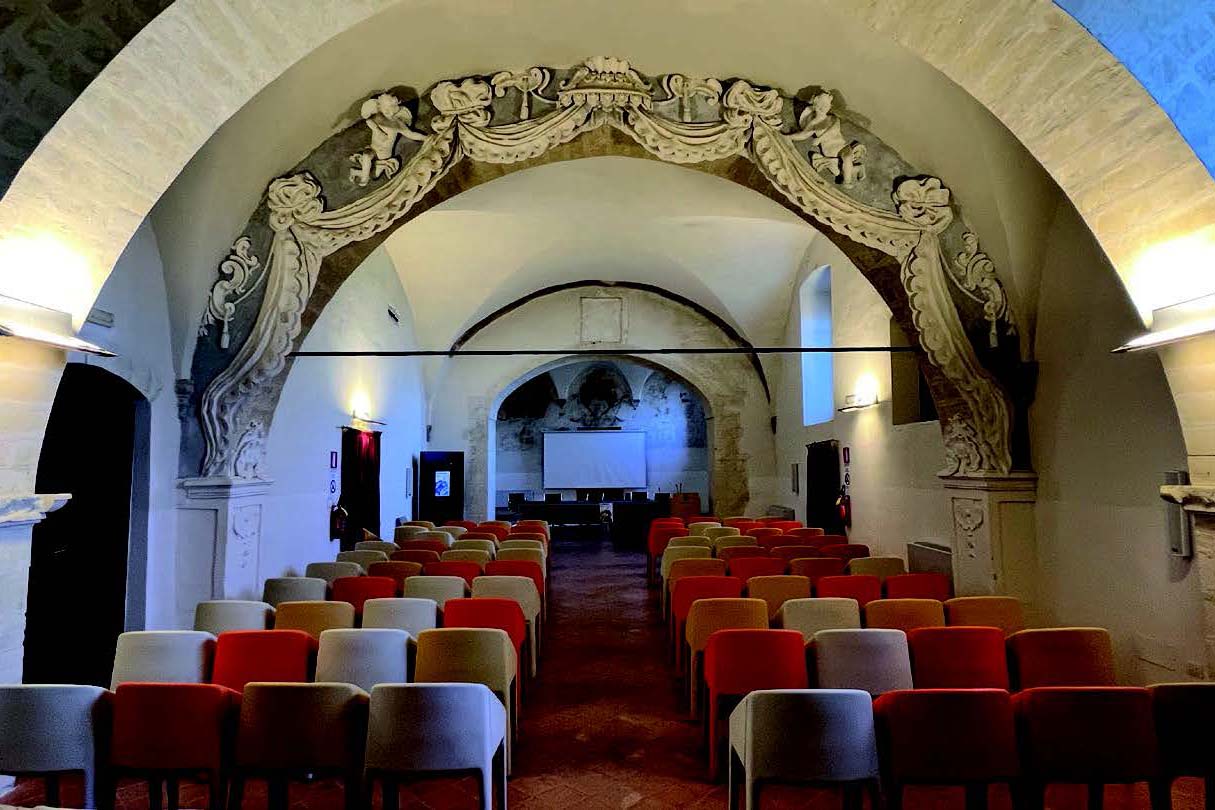LA STORIA – Abbazia S. Michele Arcangelo
Della fondazione dell’Abbazia dedicata a S. Michele Arcangelo non esistono al momento prove storiche attendibili. La prima fonte scritta su Montescaglioso e sulla presenza benedettina nel suo territorio risale all’anno 893. Si tratta di un’attestazione della proprietà della chiesa di S. Lorenzo da parte dell’Abbazia benedettina di S. Vincenzo al Volturno {Molise), documentata nel 1099 fra le proprietà dell’Abbazia di S. Michele nata probabilmente in questo periodo. Nel corridoio d’ingresso, nella prima sala a sinistra (2) è possibile ammirare un plastico in scala dell’Abbazia; nella sala comunicante (3), invece, ci sono le riproduzioni dello “Scriptorium” e della “Speziaria”. Oltrepassato il corridoio di entrata al complesso monumentale ci si ritrova di fronte al primo chiostro {detto anche occidentale), realizzato tra XV e XVI secolo e destinato allo svolgimento di attività rivolte soprattutto all’esterno: accoglienza degli ospiti, portineria per l’elemosina giornaliera e domenicale destinata ai poveri ecc. Nelle sale del lato nord è possibile visitare la ricostruzione di una tipica cella monastica (4), la sala del “Telamone” (6), una scultura databile tra il lii e di Il secolo a.e .. e un’ampia sala con evidenze archeologiche (5). Il Telamone, di grandi dimensioni e raffigurato completamente nudo, richiama i Sileni e i Satiri dei cortei dionisiaci di età classica
Proseguendo lungo il porticato nord, si giunge al secondo chiostro {detto orientale), più antico del precedente perché realizzato tra Xl e Xli secolo. Nel corso degli scavi effettuati in questo spazio sono emerse le testimonianze di necropoli indigene e del periodo greco, tracce del tessuto urbano {VII-IV sec. a.C.) e testimonianze dell’evoluzione edilizia dell’Abbazia risalenti ad un periodo compreso tra Xl e XVI secolo. Nel chiostro orientale è situato il pozzo con l’articolato sistema di adduzione dell’acqua piovana. Lungo i portici circostanti si articolavano gli spazi funzionali alla vita in comune dei benedettini: la sala del Capitolo (8), la dispensa, la cucina (9) e la spezieria. Ripercorrendo il portico del lato sud è possibile accedere agli ambienti del piano superiore che in origine ospitavano l’appartamento dell’Abate (12), l’archivio e la biblioteca (13), completamente affrescata nella fascia perimetrale alta. Il ciclo di affreschi, risalente alla prima metà del ‘600, raffigura una serie di Santi, benedettini e non, e personalità del mondo classico come Pitagora e Arpocrate. Stando all’ipotesi dello studioso Sigfrido Hobel, al momento non sufficientemente suffragata, il simbolismo dei dipinti sarebbe riconducibile alle fasi di un processo alchemico.








